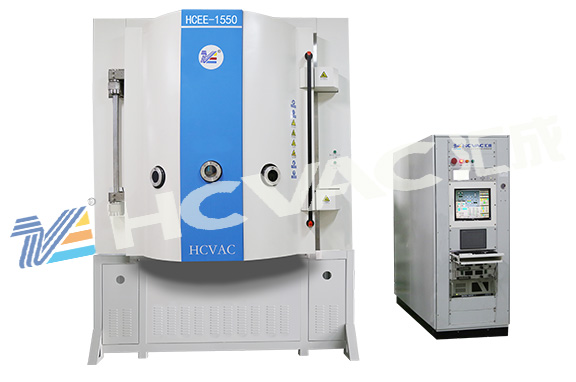The causes of poor film strength in optical vacuum coating machine, as well as the bonding between substrate and film layer. In general, this is the main reason for membrane weakness in antireflection membranes. Due to the inevitable attachment of harmful impurities to the surface of the substrate during optical cold processing and cleaning, there are always some damage layers on the surface of the substrate due to the effect of optical cold processing. Impurities that penetrate deep into the damage layer (such as water vapor, oil vapor, cleaning solution, wiping solution, polishing powder, etc., among which water vapor is the main one) are difficult to remove using ordinary methods, especially for good hydrophilicity, This is especially true for substrates with strong adsorption capacity. When membrane molecules accumulate on these impurities, it affects the adhesion of the membrane layer, which also affects the strength of the membrane.

In addition, if the hydrophilicity and adsorption capacity of the substrate are poor, the adsorption of the membrane layer is also poor, which will also affect the membrane strength. The chemical stability of nitrate materials is poor, and during the substrate circulation process before processing, the surface has already been corroded, forming a corrosion layer or hydrolysis layer (perhaps local or extremely thin). The adsorption of the film layer on the corrosion layer or hydrolysis layer is poor, and the film firmness is poor. The surface of the substrate has dirt, oil stains, gray spots, saliva spots, etc., and local film adhesion is poor, resulting in poor local film firmness.
Improvement measures: Firstly, strengthen the oil and dirt removal treatment. If ultrasonic cleaning is used, the oil removal function should be emphasized and the effectiveness of the oil removal solution should be ensured; If it is a hand wipe, consider first wiping with calcium carbonate powder before cleaning.
Secondly, strengthen the baking before plating. If conditions permit, it is better for the substrate temperature to reach 300 ℃ or above, and maintain a constant temperature for more than 20 minutes to minimize the evaporation of water and oil vapor on the surface of the substrate* Attention: When the temperature is high, the substrate's adsorption capacity increases, and it is also easy to adsorb dust. So, the cleanliness of the vacuum chamber needs to be improved. Otherwise, there will be dust adhering to the substrate before plating, which not only causes other defects but also affects the strength of the film. The chemical desorption temperature of water vapor on the substrate in vacuum is above 260 ℃. But not all parts need to be baked at high temperatures, and some nitrate materials may have low film strength and color spots even when the temperature is high. This is closely related to stress and material heat matching. When conditions permit, installing a condensing machine (PLOYCOLD) on the unit can not only improve the vacuum pumping speed of the unit, but also assist in the removal of substrate water vapor and oil gas.
Four, improve the vacuum degree of evaporation and plating. For coating machines above 1 meter, the starting vacuum of evaporation and plating should be higher than 3 * 10-3Pa. The larger the coating machine, the higher the starting vacuum of evaporation and plating.
When conditions permit, the unit should install an ion source, bombard before plating, clean the substrate surface, and assist in the coating process, which is conducive to the compaction and firmness of the film layer.
Dehumidify the six membrane materials and dry them in a vacuum chamber using a culture dish.
Maintain a dry working environment (including lens wiping and umbrella work area), and do not bring in too much water vapor when cleaning the working environment.
The combination of substrate and film layer is one of the important reasons for poor film strength in
optical vacuum coating machines, and it is also a cause of special concern for processing manufacturers.



